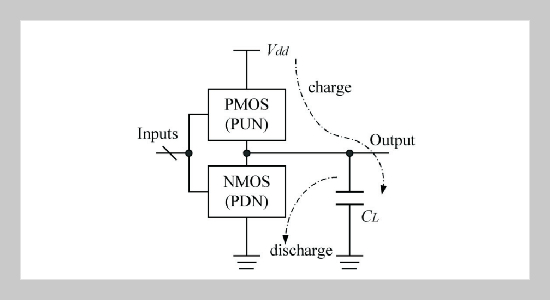REFERENCES
- [1] Girad, P., “Survey of Low-Power Testing of VLSI Circuits,” IEEE Design & Test of Computers, Vol. 19, pp.82�92 (2002).
- [2] Gerstendorfer, S. and Wunderlich, H. J., “Minimized Power Consumption for Scan-Based BIST,” Proc. IEEE Int’l Test Conf. (ITC), pp. 77�84 (1999).
- [3] Zorian, Z., “A Distributed BIST Control Scheme for Complex VLSI Devices,” Proc. IEEE VLSI Test Symp. (VTS), pp. 4�9 (1993).
- [4] Wang, S. and Gupta, S. K., “DS-LFSR: A New BIST TPG for Low Heat Dissipation,” Proc. IEEE Int’l Test Conf. (ITC), pp. 848�857 (1997).
- [5] Rosinger, P., Al-Hashimi, B. M., and Nicolici, N., “Scan Architecture with Mutually Exclusive Scan Segment Activation for Shift- and Capture-Power Reduction,” IEEE Trans. Computer-Aided Design, Vol. 23, pp. 1142�1153 (2004).
- [6] Wang, S. and Gupta, S. K., “ATPG for Heat Dissipation Minimization for Scan Testing,” Proc. ACM/IEEE Design Auto. Conf. (DAC), pp. 614�619 (1997).
- [7] Sankaralingam, R. and Touba, N. A., “Controlling Peak Power during Scan Testing,” Proc. IEEE VLSI Test Symp. (VTS), pp. 153�159 (2002).
- [8] Badereddine, N., Girard, P., Pravossoudovitch, S., Landrault, C., Virazel, A., Wunderlich, H.-J., “Minimizing Peak Power Consumption during Scan Testing: Test Pattern Modification with X Filling Heuristics,” Proc. Design & Test of Integrated Systems in Nanoscale Technology. (DTIS), pp. 359�364 (2006).
- [9] Girard, P., Landrault, C., Pravossoudovitch, S. and Severac, D., “Reducing Power Consumption during Test Application by Test Vector Ordering,” Proc. Int’l Circuits and Systems Symp. (ISCAS), Vol. 2, pp. 296� 299 (1998).
- [10] Tseng, W.-D., “Scan Chain Ordering Technique for Switching Activity Reduction during Scan Test,” IEE Proceedings on Computers and Digital Techniques, Vol. 152, pp. 609�617 (2005).
- [11] Jung, J. M. and Chong, J. W., “Efficient Test Data Compression and Low Power Scan Testing in SoCs,” Electronics and Telecommunications Research Institute, Vol. 25, pp. 321�327 (2003).
- [12] Saxena, J., Butler, K. M. and Whetsel, L., “An Analysis of Power Reduction Techniques in Scan Testing,” Proc. IEEE Int’l Test Conf. (ITC), pp. 670�677 (2001).
- [13] Bonhomme, Y., Girard, P., Guiller, L., Landrault, C. and Pravossoudovitch, S., “A Gated Clock Scheme for Low Power Scan Testing of Logic ICs or Embedded Cores,” Proc. IEEE Asian Test Symp. (ATS), pp. 253� 258 (2001).
- [14] Kim, H. S., Kim, C. G. and Kang, S., “ANew Scan Partition Scheme for Low-Power Embedded Systems,” Electronics and Telecommunications Research Institute, Vol. 30, pp. 412�420 (2008).
- [15] Huang, T.-C. and Lee, K.-J., “Reduction of Power Consumption in Scan-Based Circuits during Test Application by an Input Control Technique,” IEEE Trans. Computer-Aided Design, Vol. 20, pp. 911�917 (2001).
- [16] Alpaslan, E., Huang, Y., Lin, X., Cheng, W.-T. and Dworak, J., “Reducing Scan Shift Power at RTL,” Proc. IEEE VLSI Test Symp. (VTS), pp. 139�146 (2008).
- [17] Lee, K. J., Huang, T. C. and Chen, J. J., “Peak-Power Reduction for Multiple-Scan Circuits during Test Application,” Proc. IEEE Asian Test Symp. (ATS), pp. 453�458 (2000).
- [18] Nicolici, N. and Wen, X., “Embedded Tutorial on Low Power Test,” Proc. European Test Symp. (ETS), pp. 202�207 (2007).
- [19] Wen, X., Kajihara, S., Miyase, K., Suzuki, T., Saluja, K., Wang, L.-T., Abdel-Hafez, K. and Kinoshita, K., “A New ATPG Method for Efficient Capture Power Reduction during Scan Testing,” Proc. IEEE VLSI Test Symp. (VTS), pp. 58�63 (2006).
- [20] Wen, X., Yamashita, Y., Kajihara, S., Wang, L.-T., Saluja, K. and Kinoshita, K., “On Low-Capture-Power Test Generation for Scan Testing,” Proc. IEEE VLSI Test Symp. (VTS), pp. 265�270 (2005).
- [21] Sankaralingam, R., Pouya, B. and Touba, N. A., “Reducing Power Dssipation during Test Using Scan Chain Disable,” Proc. IEEE VLSI Test Symp. (VTS), pp. 319� 324 (2001).
- [22] Miyase, K. and Kajihara, S., “XID: Don’t Care Identification of Test Patterns for Combinational Circuit,” IEEE Trans. Computer-Aided Design, Vol. 23, pp. 321�326 (2004).
- [23] Lee, H. K. and Ha, D. S., “Atalanta: an Efficient ATPG for Combinational Circuits,” Technical Report, 93-12, Dep’t of Electrical Eng., Virginia Polytechnic Institute and State University, Blacksburg, Virginia (1993).
















